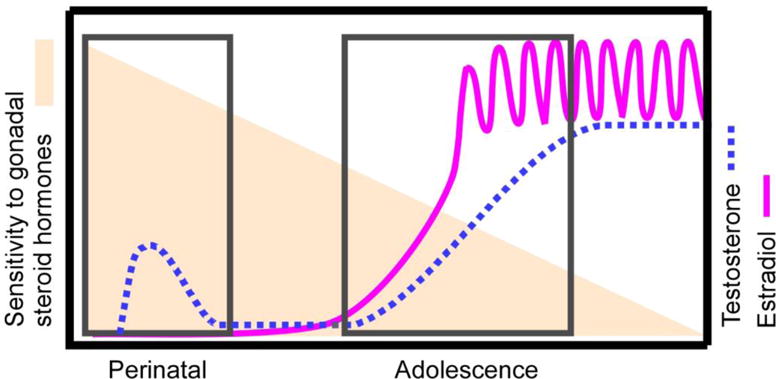Figure 1.

The Two-stage model of postnatal brain and behavioral development. The lines depict the time course for endogenous secretions of testosterone (dotted line) in males and estradiol in females (solid line) across postnatal development. The boxes highlight the times in which endogenous gonadal steroid hormones typically organize the developing brain. The shading indicates, based on current empirical evidence, sensitivity to the organizing actions of gonadal steroid hormones decreases across postnatal development. Note that while substantial evidence suggests that both male and female behaviors are organized by adolescent exposure to gonadal steroid hormones, the evidence thus far for decreasing sensitivity to the organizing actions of hormones across postnatal development is primarily in males in a limited number of species. Therefore, further testing of this empirical model may reveal a different pattern of sensitivity to gonadal steroid hormones in sexes of additional species.
